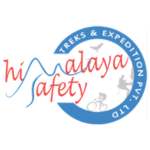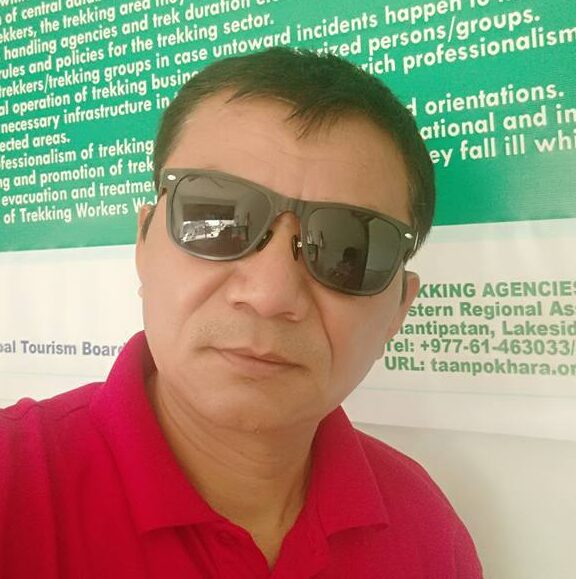Nepal is often synonymous with snow-capped mountains and iconic treks like Everest Base Camp and Annapurna Circuit. But hidden behind those high-altitude trails is another thrilling adventure waiting to be explored—rock climbing. From jungle-covered limestone cliffs to alpine granite walls overlooking glacial valleys, Nepal is a rising destination for climbers of all levels.
Whether you’re a novice trying your hand at sport climbing or an experienced climber aiming to conquer high-altitude walls, Nepal has something to offer. In this article, we highlight five of the best rock climbing destinations in Nepal that will elevate your next adventure.
1. Hattiban – Kathmandu’s Premier Climbing Crag
Just a short drive from the bustling streets of Kathmandu, nestled in the pine-clad hills of Pharping, lies one of Nepal’s most picturesque outdoor climbing crags — Hattiban Rock Climbing. Known for its rugged natural beauty and peaceful surroundings, Hattiban has become a go-to destination for adventure seekers looking to test their limits while escaping the chaos of the city.
This experience is more than just climbing—it’s a full-day immersion into nature, physical challenge, and spiritual stillness.
🌄 Where Nature Meets Adrenaline
Hattiban offers a unique blend of technical climbing routes, spiritual ambiance, and stunning views of the Pharping Valley. Surrounded by dense pine forests, chirping birds, and tranquil Buddhist monasteries, it provides both a physical and mental escape. The climbing routes are carved into naturally formed limestone cliffs, offering vertical and slightly overhung lines that range in difficulty.
Despite its proximity to Kathmandu (just 1–1.5 hours away), Hattiban feels worlds apart — wild, quiet, and perfectly suited for a day of outdoor adventure.
🧗 Climbing Features
Climbing Type: Outdoor Sport Climbing
Rock Type: Limestone
Max Climb Height: Approx. 15 meters (single-pitch)
Difficulty Level: Strenuous – suitable for adventurous beginners to experienced climbers
Gear Used: Climbing ropes, harnesses, belay devices, helmets, chalk powder
Guide Support: Essential for safety and instruction
This area is perfect for climbers who want to learn the basics, refine their climbing techniques, or simply enjoy a beautiful day scaling natural formations in a serene setting.
🧭 Full-Day Hattiban Climbing Itinerary
Here’s a typical day plan based on the itinerary structure used by professional agencies:
6:00 AM – Departure from Kathmandu
Meet at the bus park or your accommodation for a scenic drive south toward Pharping.
8:00 AM – Arrival at Hattiban & Breakfast
Start the day with a hearty breakfast while soaking in the fresh air and peaceful forest surroundings.
8:30 AM – Hike to Climbing Spot
Take a 30-minute uphill hike through pine forest trails to reach the rock climbing base.
9:00 AM – Gear Briefing
Your guide introduces all climbing equipment — harness, helmet, rope, chalk bag, and belay system — and explains proper usage.
9:30 AM – Warm-Up
Stretch, rest, and mentally prepare for the climbs ahead.
10:00 AM – Climbing Begins!
Enjoy an intense session of climbing with personalized guidance, route selection, and skill-building.
12:30 PM – Lunch Break
Pause for lunch and rehydrate. The resting spot offers views across the valley — perfect for catching your breath and photos.
1:00 PM – Second Climbing Session
Tackle more routes or attempt more technical climbs with the help of your guide. Learn rope techniques, belaying, and rappelling basics.
3:00 PM – Wrap-Up, Pack Gear
Begin cleaning the site, removing ropes, and packing gear for descent.
3:45 PM – Return Hike & Refreshments
Hike back to the base area for tea or local snacks while enjoying the peaceful surroundings.
4:15 PM – Return to Kathmandu
Drive back with memories of an adventure-packed day, refreshed and fulfilled.
🌟 What Makes Hattiban Special?
Nature & Solitude: Surrounded by forests and monasteries, Hattiban offers spiritual peace along with physical challenge.
Easy Accessibility: Close to Kathmandu yet hidden enough to feel like a true wilderness escape.
Perfect for Beginners & Experts: With varied climbing routes and full gear instruction, it’s suited for all levels.
Cultural Surroundings: The area is home to Buddhist monks, meditation centers, and sacred caves — great for post-climb reflection.
Departure: Daily departures available in all seasons
Custom Itineraries: Tailor-made plans can be arranged based on your group size, timing, or skill level
🕐 Best Time to Climb at Hattiban
Hattiban is climbable year-round, but the best seasons are:
Spring (March to May) – Clear skies, pleasant temperatures, dry rock
Autumn (September to November) – Crisp air and stunning forest colors
Avoid climbing during monsoon season (June–August) when the trails are muddy and rocks are slippery.
🧘 Bonus: Combine with Spiritual Exploration
Pharping isn’t just for climbers — it’s also a center of Buddhist and Hindu spirituality. After your climbing session, visit:
Asura Cave (where Guru Rinpoche meditated)
Monasteries like Neydo Tashi Choling
Dakshinkali Temple, one of the most sacred Hindu shrines in Nepal
Hattiban Rock Climbing is a powerful blend of physical challenge and inner peace. Whether you’re a first-time climber or a seasoned adventurer, the tranquil forests, limestone cliffs, and supportive guides create the perfect setting for a meaningful day in nature.
Let Himalaya Safety Treks & Expedition (hstnpl.com) take care of your climbing logistics, so you can focus on the thrill of the ascent and the serenity of the surroundings. Climb. Breathe. Explore. Repeat.
👉 Book your Hattiban rock climbing adventure today and experience Nepal in a whole new vertical way.
2. Shivapuri – Beginner-Friendly Forest Climbing
Just a short drive from the capital, Shivapuri Nagarjun National Park offers some of the most accessible and scenic rock climbing in Nepal. Hidden within the forested trails near Budhanilkantha lies a series of limestone cliffs perfect for beginners and intermediate climbers.
What to Expect:
Grade Range: 5a to 6c
Access: Short hike from the park entrance
Style: Single-pitch sport climbing
Extras: Wildlife, birds, and dense forest ambiance
Shivapuri is perfect for those looking to escape the city’s buzz and enjoy a quiet climbing day amid nature. The national park setting provides a tranquil environment for both learning and adventure.
3. Bimal Nagar – A Hidden Gem Between Kathmandu and Pokhara
Situated along the scenic Prithvi Highway between Kathmandu and Pokhara, Bimal Nagar is an emerging gem in Nepal’s climbing map. Often referred to as “Chun Pahara” or even “Bandipur Crag”, this impressive limestone cliff has transformed from a quiet roadside village into one of Nepal’s most exciting and under-the-radar rock climbing destinations.
📍 Location & Access
Bimal Nagar is located approximately 140 km west of Kathmandu (about a 5-hour drive), or 59 km southeast of Pokhara. It’s conveniently accessible for travellers moving between the two cities. The cliff lies just across the highway from a hotel called “Helen and Rocky Land”, though not highly recommended, and a one-minute walk up a staircase brings you directly to the base of the wall.
Despite being close to the main road, the area remains quiet, surrounded by hills, forest, and views of the Marsyangdi River. On a clear day, climbers can even enjoy distant views of Mt. Manaslu (8,163m) and parts of the Annapurna range.
🧗 Climbing at Bimal Nagar
Bimal Nagar boasts over 30 bolted sport routes, with grades ranging from 5a to 8a+, and some multi-pitch lines reaching up to 55 meters in length. The crag is made of sharp, pocketed, low-angle limestone, offering a good mix of slab, vertical, and even overhanging sections. The bolting has been done responsibly, and many climbs feature well-made cement belay areas and stone stairways for easy access.
⭐ Key Highlights:
Total Routes: 30+ sport routes (single & multi-pitch)
Grade Range: 5a to 8a+ (French grades)
Route Length: Up to 55 meters (multi-pitch available)
Style: Pocketed limestone with some tufas and overhangs
Sun/Shade: Morning shade, partial afternoon sun
Crowd Level: Minimal (often just curious local children watching in awe)
Some standout climbs include:
#10 Cobra (7b ★★★) – A unique overhanging challenge involving roof problems and delicate limestone smearing.
Karma (8a+) – Said to be one of the hardest sport routes in Nepal.
Tufa Town (7c) – A 36m route known for its flow and variety.
#4.4 Unknown (55m) – Possibly the tallest multi-pitch line in the area.
Climbers often describe the experience as surreal, quiet, scenic, and often entirely to themselves.
🧭 Approach & Logistics
You’ll find Bimal Nagar directly along the Kathmandu–Pokhara highway. Most climbers stop here as part of a larger trip (especially those heading to Bandipur or Pokhara). The approach trail is short—less than a minute from the road—and leads to both upper and lower sectors.
While the area lacks formal climbing infrastructure, the routes are bolted and safe, and local guiding companies in Kathmandu (Hardcore Nepal) and Pokhara (Adrenaline Rush Whitewater) provide more beta and can assist with logistics.
🏠 Accommodations & Food
The village around Bimal Nagar is small, with very limited lodging or dining. There are a few basic guesthouses, and cold drinks—including beer—may be available depending on electricity and season. Most climbers choose to stay in nearby Bandipur (20–30 minutes away) or continue onward to Pokhara after climbing.
🕰️ History of Bimal Nagar Climbing Area
The crag was first developed in 2006 by a group of mountain guides led by Prem Gurung, in memory of the late Iman Gurung, a mountaineer and instructor who lost his life in an avalanche in the Nar Phu Valley. Since then, Bimal Nagar has grown into a beloved training ground for Nepal’s growing climbing community.
Throughout the 2010s, the site was used for climbing competitions and mountaineering training programs, further boosting its reputation. Although highway expansion and low tourism have made it quieter in recent years, Bimal Nagar remains a sacred space for those who seek true adventure away from commercial routes.
🧗 Ideal For:
Intermediate to advanced climbers seeking new challenges
Climbers travelling between Kathmandu and Pokhara
Alpine climbers looking to warm up before multi-day expeditions
Those interested in peaceful, less-travelled climbing locations with cultural charm
📅 Best Time to Climb
Ideal Months: October to April
Avoid: June to August (monsoon rains can make the rock slippery and access muddy)
Morning is the best time to climb, especially during hotter months, as the cliffs are shaded until midday.
Bimal Nagar may not be as famous as Hattiban or Shivapuri, but its towering routes, peaceful environment, and meaningful history make it a truly special destination for rock climbers in Nepal. With climbs for every level, stunning views, and a legacy rooted in Nepali mountaineering, it offers a raw, unforgettable experience.
At Himalaya Safety Treks and Expedition, we offer guided climbing trips and tailored multi-day adventures to Bimal Nagar and other climbing destinations in Nepal. Whether you’re stopping for a single pitch or planning a full climbing tour across the country, let us handle the logistics while you focus on the rock.
👉 Ready to scale new heights? Contact us today to book your Bimal Nagar climbing adventure.
4. Methlang – Pokhara’s Backyard Climbing Spot
Methlang, perched above the beautiful Phewa Lake in Pokhara, is a rising star in the Nepali climbing scene. Just 15–20 minutes from the tourist hub of Lakeside, this area is gaining popularity among both locals and travellers.
Climbing Conditions:
Routes: Over 15 sport climbing routes
Grade Range: Mostly 5a to 6c
Rock Type: Limestone
View: Panoramic vistas of Phewa Lake and Annapurna peaks
Methlang is ideal for half-day climbing sessions, particularly for those staying in Pokhara. The sunset views from the cliff are stunning, and you can pair your climb with nearby hikes to Peace Stupa or boating on the lake.
5. Manang – High-Altitude Rock Climbing in the Himalayas
If you’re craving a more alpine-style adventure, Manang delivers an unforgettable experience. Situated at an altitude of over 3,500 meters on the Annapurna Circuit, Manang features both natural granite walls and boulders suitable for sport and trad climbing.
High-Altitude Climbing Details:
Type: Traditional and sport climbs with scrambling and mixed terrain
Experience Needed: Moderate to high
Altitude: Over 3,500 meters (acclimatisation required)
Best Use: Combine with trekking and acclimatisation days
Climbers often use Manang to train or warm up before attempting peaks like Chulu East, Pisang Peak, or Thorong La Pass. The views are absolutely surreal, and climbing here gives you a true taste of the Himalayan wilderness.
Best Time for Rock Climbing in Nepal
Nepal has a variety of microclimates, but the best general seasons for rock climbing are:
Spring (March to May) – Warm, dry, and stable conditions.
Autumn (September to November) – Cool temperatures and excellent visibility.
Avoid the monsoon season (June to August) when routes become slippery and dangerous, especially in forested areas. Winter can be good in lower elevations like Hattiban or Bimal Nagar but will be harsh in places like Manang.
Essential Tips for Climbing in Nepal
✅ Go with a local guide, especially in lesser-known or high-altitude areas.
🎒 Rent or bring gear – You can find rentals in Kathmandu or Pokhara.
🧢 Wear a helmet – Some areas may have loose rock or wildlife above.
🌄 Start early – Morning climbs are best for avoiding heat or afternoon winds.
📶 Expect limited mobile signal – Especially outside Kathmandu and Pokhara.
Why Add Rock Climbing to Your Nepal Adventure?
Rock climbing in Nepal is more than just scaling a wall—it’s a deeper connection to the landscape, the people, and the natural energy of the Himalayas. Whether you’re climbing limestone cliffs surrounded by jungle or granite faces at 4,000 meters above sea level, the experience is raw, rewarding, and refreshingly different.
At Himalaya Safety Treks & Expedition, we offer tailor-made climbing and trekking combinations—complete with certified guides, gear, transport, and permits. Whether you’re an experienced climber or a complete beginner, we’ll help you explore Nepal’s vertical playground safely and enjoyably.
Ready to climb beyond the ordinary?
Explore rock climbing with us. Visit hstnpl.com and let’s plan your next Himalayan adventure.



